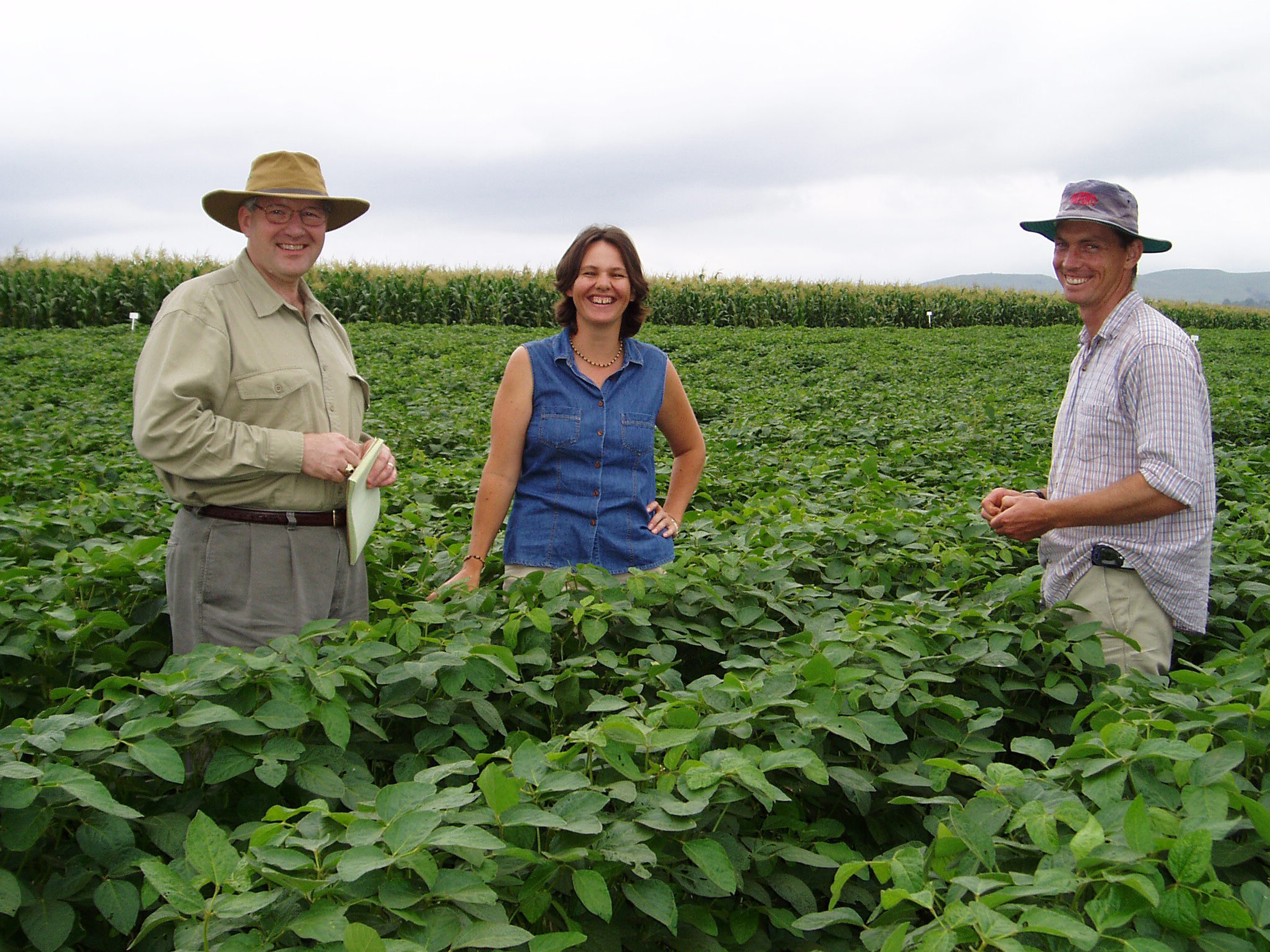Contact: Phil Hearn

STARKVILLE, Miss.--Mississippi State scientists are helping federal homeland security officials develop a comprehensive plan for detecting potential threats of biological terrorism against U.S. agricultural production.
The Department of Homeland Security's Science and Technology Directorate has asked the university to use its array of scientific and research resources to evaluate preparedness, assess technology and specify an end-to-end system approach for reducing agricultural biosecurity risks.
Working in conjunction with the Department of Energy's national laboratories and assisted by a National Science Foundation grant of nearly $1 million, MSU's GeoResources Institute--with its remote sensing and geospatial surveillance and atmospheric modeling capabilities--is leading the multi-disciplinary effort.
"This project is vitally important as a first step in protecting agriculture and our overall economy from the threat of biological agents to our crops," said GRI director David Shaw. "The national architecture that will be developed from this effort will be critical to protect the agricultural infrastructure."
A 2003 National Research Council study concluded the United States is vulnerable to bioterrorism directed against agriculture, and recommended the government establish a comprehensive plan of response. So, MSU is developing a framework that will serve as a prototype system for anticipating, detecting and eradicating such threats.
"We are developing systems to defend against the use of bioagents, biotoxins and biopests that are not currently found in this country, but could be easily and maliciously introduced and established in the U.S.," said Chuck Hill, GRI's associate director for technology integration and the study's principal investigator.
He said the cross-campus collaborative effort involves researchers from the Mississippi Agricultural and Forestry Experiment Station, Mississippi Cooperative Extension Service, Bagley College of Engineering, Social Science Research Center, and the Janos Radvanyi Chair in International Security Studies.
"The combined expertise in societal needs and in technical application development provides a base for further specifying research needs and recommending approaches to develop a more effective organizational response," said Hill.
Focusing on the potential threat of Asian soybean rust for test purposes, researchers hope the project will lead to new strategies for detecting the pathogen early and monitoring progression of the devastating crop disease. Soybeans represent the largest acreage of planted crops in the nation at 75 million acres and are second only to corn in total value. Experts estimate damages from soybean rust could reach $2 billion during the upcoming growing season.
GRI technologists note, however, the use of space or aircraft-based remote sensing--which can assess and quantify crop injury often not visible by ground observation--figures prominently into a planned multi-staged approach to detecting the threat.
"The sensors we use can see a sudden-death syndrome in soybeans two weeks before you can see it with your eyes," explained Hill. "Hopefully, we'll be able to see those outbreaks and treat those before four acres turns into 400 acres."
As part of the effort, MSU researchers are conducting fact-finding missions and collecting data in South Africa, where the first outbreak of soybean rust occurred as an imported pathogen; and to the South American countries of Brazil and Paraguay, which subsequently have experienced outbreaks. Easily transported over long distances by wind and human contact, the rust spores arrived in several Southeastern states with Hurricane Ivan last fall.
"We're talking with government officials and plant pathologists in South Africa and South America to find out what they've been doing to combat soybean rust, so we can gain a better understanding of where we may need to direct our resources here," said Roger King, GRI's associate director for research and a recent visitor to South Africa.
One method of detecting soybean rust, he said, involves the establishment of sentinel or test soybean plots early in the planting season as an "early warning system."
GRI technologists are recommending to DHS a multi-staged approach that would begin with detection of soybean rust in sentinel plots. The infestation and spread of the disease then would be monitored through the use of aircraft or spacecraft-based sensor systems, as well as input from various computational models.
With the help of researchers from MSU's department of plant and soil sciences, MAFES research units and the Delta Research and Extension Center in Stoneville, sentinel plots are being planted at farm sites in the Delta and along the Mississippi Gulf Coast. Once infestation is determined, various fungicides may be applied to test their effectiveness against the crop disease.
Hill said he expects the study, which began in July of 2004, will be concluded by the late summer or early fall of this year. At that point, he said DHS and DOE officials probably will begin making plans to build the framework of a biosecurity system.
"In the meantime, the extension service is making farmers aware of the soybean rust threat and the proper ways of applying fungicide to control it," he said.
NEWS EDITORS/DIRECTORS: For more information, contact Dr. Hill at (662) 325-9576 or chill@gri.msstate.edu. Dr. King may be reached at 325-2189, 325-2298 or rking@ece.msstate.edu.